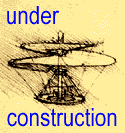 Guide to bamboos in western cultivation Guide to bamboos in western cultivation
See also: Quick identification by photos Vegetative Key to Cultivated Genera
For cultivated bamboo of Europe, N America, and many other temperate or subtropical parts of the world, the species are slowly being studied to produce an online guide. In an ideal world, such work would be funded, and would soon have accurate reliable names, better descriptions that are verified from cultivated plants, and detailed illustrations (close-up photos) of the most important parts of the plant for identification by botanical detail.
But this is not an ideal world. Even if not completed, these descriptions will hopefully serve to demonstrate how to identify bamboo genera and their species from morphological characters, and they may one day eventually be expanded to represent a reasonable proportion of the bamboos in cultivation. There are considerable constraints here, not least the poor state of the fundamental taxonomy and knowledge of the species in their natural habitats, but sadly also a total lack of any interest or commitment from botanical institutions in the UK.
The descriptions were initially being developed for the grasses in the Flora of N America account, and for an ambitious online Grass Manual on the Web, organized by Mary Barkworth and Lynn Clark, through Utah State University. Abridged versions, giving only a bare minimum of those species considered fully naturalised in the US, was later published in FNA Vol 24 (only 10 species from Arundinaria, Bambusa, Phyllostachys and Pseudosasa) and in the Manual of Grasses for North America. Unfortunately the Utah State University project stalled because of a lack of funding on that side of the pond as well, which is basically why this website was started, to make use of the descriptions prepared, but not incorporated in the severely pared back versions published.
A small grant was received in 2009 through the generosity of the Stanley Smith (UK) Horticultural Trust to create this website as a service to horticulturalists, to make some use of the unused descriptions of cultivated bamboos, and it was hoped ... that further support would be found to continue to expand, verify, and improve the taxonomy, descriptions and illustrations.
Meanwhile, there are other similar websites with a wider coverage, but less detail, notably Fred Vaupel’s excellent German-language website, and of course several well-illustrated books written from a horticulture/nursery perspective.
Also see the latest ABS Species List, a list of all cultivated bamboos in the US with commercial suppliers, listed in a serial publication under their currently used, official, ABS-approved names on the ABS website, or as an expanded online list of these along with others, more recently introduced, in red, which have not had their identities names and characteristics checked, on the bamboowebweb.info website.
|

